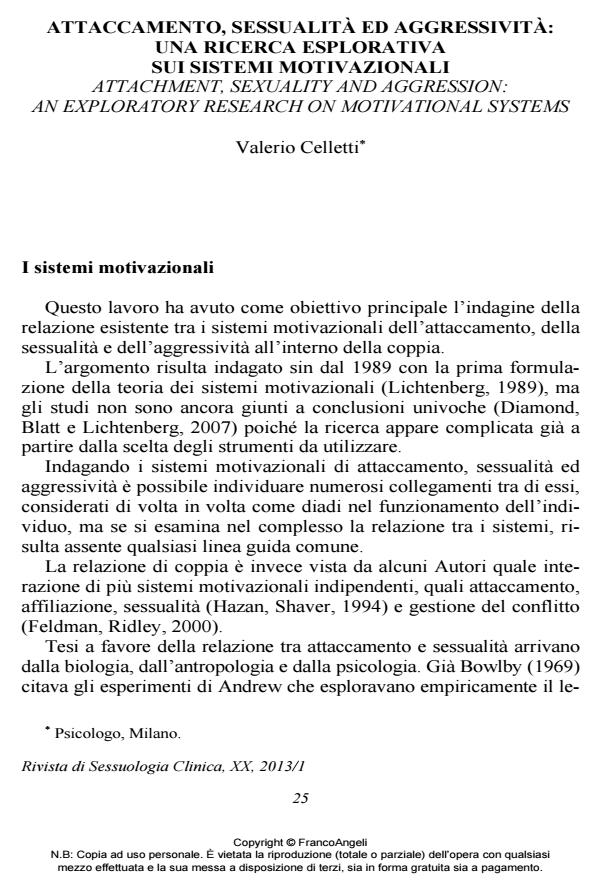Attachment, sexuality and aggression: an exploratory research on motivational systems
Journal title RIVISTA DI SESSUOLOGIA CLINICA
Author/s Valerio Celletti
Publishing Year 2013 Issue 2013/1
Language Italian Pages 10 P. 25-34 File size 369 KB
DOI 10.3280/RSC2013-001002
DOI is like a bar code for intellectual property: to have more infomation
click here
Below, you can see the article first page
If you want to buy this article in PDF format, you can do it, following the instructions to buy download credits

FrancoAngeli is member of Publishers International Linking Association, Inc (PILA), a not-for-profit association which run the CrossRef service enabling links to and from online scholarly content.
In sexology the topic of aggression in sexuality is widely studied. On the contrary, the effects of attachment in sexuality is rarery discussed. Attachment theorists often refer to the aggressive behaviour instead of sexuality. The motivational systems theory could be a theoretical framework that would allow to consider them all together. This research explores the relationship between these three systems (attachment, sexuality and aggression) and proposes a direction for future studies.
Keywords: Sexuality, attachment, aggression, motivational systems, interaction, assessment tools.
Valerio Celletti, Attaccamento, sessualità ed aggressività: una ricerca esplorativa sui sistemi motivazionali in "RIVISTA DI SESSUOLOGIA CLINICA" 1/2013, pp 25-34, DOI: 10.3280/RSC2013-001002